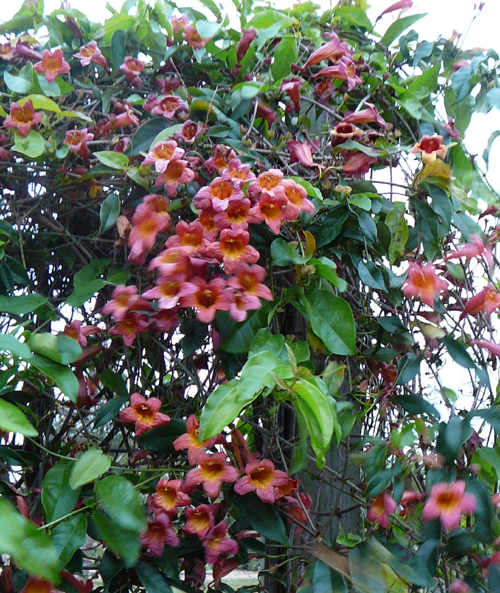
by Sheila Dunning | Mar 22, 2016
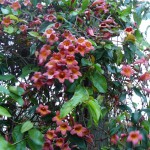 According to the Atlas of Florida Vascular Plants, there are more than 4,200 plant species naturally occurring in the state. Nearly 3,000 are considered native. The Florida Native Plant Society (FNPS) defines native plants as “those species occurring within the state boundaries prior to European contact, according to the best available scientific and historical documentation.” In other words, the plants that grew in natural habitats that existed prior to development.
According to the Atlas of Florida Vascular Plants, there are more than 4,200 plant species naturally occurring in the state. Nearly 3,000 are considered native. The Florida Native Plant Society (FNPS) defines native plants as “those species occurring within the state boundaries prior to European contact, according to the best available scientific and historical documentation.” In other words, the plants that grew in natural habitats that existed prior to development.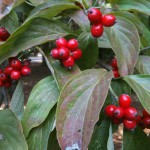
Native plants evolved in their own ecological niches. They are suited to the local climate and can survive without fertilization, irrigation or cold protection. Because a single native plant species usually does not dominate an area, there is biodiversity. Native plants and wildlife evolved together in communities, so they complement each other’s needs. Florida ranks 7th among all 50 states in biodiversity for number of species of vertebrates and plants. Deer browse on native vines like Crossvine (Bignonia capreolata), Trumpet Creeper (Campsis 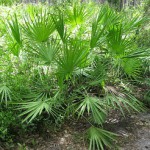 radicans), Yellow Jessamine (Gelsemium sempervirens) and Trumpet Honeysuckle (Lonicera sempervirens). The seeds and berries of Black-eyed Susan (Rudbeckia fulgida), Flowering Dogwood (Cornus florida) and Dahoon holly (Ilex cassine) provide vital food for songbirds, both local and migratory. Saw palmetto (Serenoa repens) provides cover for numerous birds and small mammals, as well as, reptiles.
radicans), Yellow Jessamine (Gelsemium sempervirens) and Trumpet Honeysuckle (Lonicera sempervirens). The seeds and berries of Black-eyed Susan (Rudbeckia fulgida), Flowering Dogwood (Cornus florida) and Dahoon holly (Ilex cassine) provide vital food for songbirds, both local and migratory. Saw palmetto (Serenoa repens) provides cover for numerous birds and small mammals, as well as, reptiles.
Non-native plants become “naturalized” if they establish self-sustaining populations. Nearly one-third of the plants currently growing wild in Florida are not native. 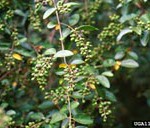 While these plant species from other parts of the world may provide some of the resources needed by native wildlife, it comes at a cost to the habitat. These exotic plants can become “invasive”, meaning they displace native plants and change the diverse population into a monoculture of one species. Chinese privet (Ligustrum sinense), Popcorn trees (Triadica sebifera) and Cogongrass (Imperata cylindrica) have
While these plant species from other parts of the world may provide some of the resources needed by native wildlife, it comes at a cost to the habitat. These exotic plants can become “invasive”, meaning they displace native plants and change the diverse population into a monoculture of one species. Chinese privet (Ligustrum sinense), Popcorn trees (Triadica sebifera) and Cogongrass (Imperata cylindrica) have 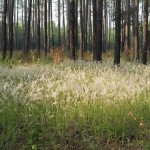 changed the landscape of Florida over the past decade. While Water hyacinth (Eichhornia crassipes) and Hydrilla (Hydrilla verticillata) have change water flow in many rivers and lakes. These invasive species cost millions of taxpayer dollars to control.
changed the landscape of Florida over the past decade. While Water hyacinth (Eichhornia crassipes) and Hydrilla (Hydrilla verticillata) have change water flow in many rivers and lakes. These invasive species cost millions of taxpayer dollars to control.
By choosing to use native plants and removing non-native invasive plants, individuals can reduce the disruptions to natural areas, improve wildlife habitat and maintain Florida’s biodiversity.

by Sheila Dunning | Feb 25, 2016
 Few plants seem to signify the freshness of spring quite as well as daffodils. The name “daffodil” is derived from “addodell” a variant of Asphodel (a plant of the Asphodelus genus.) In historical documents and the common language of 16th century Europe, the term “daffodil” referred specifically to the wild daffodil, Narcissus pseudonarcissus.
Few plants seem to signify the freshness of spring quite as well as daffodils. The name “daffodil” is derived from “addodell” a variant of Asphodel (a plant of the Asphodelus genus.) In historical documents and the common language of 16th century Europe, the term “daffodil” referred specifically to the wild daffodil, Narcissus pseudonarcissus.
The derivation of the Latin narcissus is unknown. It is frequently linked to the Greek myth of Narcissus, who was rumored to be so obsessed with his own reflection that he died while gazing at himself in a pool of water. From the location of his death sprang the narcissus plant. Another Greek myth finds Persephone, daughter of the goddess Demeter, lured to her doom by the God Hades while picking a narcissus. Therefore the plant is perceived as a symbol of vanity in some Western culture.
Others attribute the plants’ name to its narcotic properties. One translation of the Greek name is “I grow numb!” All narcissus species contain the alkaloid poison lycorine, mostly in the bulb but also in the leaves. Members of the Amaryllidaceae family contain a unique type of alkaloids. They are responsible for the poisonous properties of a number of the species. Of the 200 different chemical compounds found in this plant family, at least 79 of them can be found in narcissus.
Daffodils are a popular potted plant for cut flowers, but also make attractive naturalized groundcovers in gardens and around trees, providing color from the end of winter through late spring. If the narcissus blooms on Chinese New Year, it is said to bring wealth and good fortune throughout the year. The flower color varies from white through pinks and yellows to deep reddish-orange with multiple petal forms. Hundreds of cultivars are available.
Planting dates vary according to geographical location, but the bulbs are usually planted in the fall when the soil is cool. Daffodils grow well in full sun or light shade, with the blooms lasting longer when protected from the noon day sun. When selecting a location for planting, it should be noted that the individual flowers will face the sun.
Pre-chilled bulbs should be planted in 6-8” deep holes with a tablespoon of slow release fertilizer added to the soil directly under the bulb and with 4-5” of soil covering the bulb. Watering throughout the winter will be necessary if rains are infrequent. After flowering, the daffodils need to be fertilized and watering should continue. The foliage will naturally turn yellow and die as stored food is restored to the bulb.
Division, transplanting and collection for forcing potted plants can be done after all the foliage has declined. To force Daffodils to bloom at varied times in a container the dried bulbs will need to be stored at a 45° F temperature for 4-6 weeks prior to being placed in the sun to grow.
The bright, cheery Daffodil flowers are beginning to bloom now and will continue as Easter approaches, reminding us that spring really is coming.
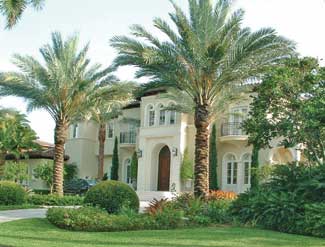
by Sheila Dunning | Jan 20, 2016
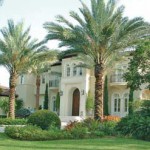 While palms may survive, or even thrive, for years in climates cooler than those to which they are native, eventually they will experience temperatures cold enough to cause injury. Here in Northwest Florida, it was January 2014. Unfortunately, much of the damage was not evident until the summer of 2015. The palms held on with stored food reserves.
While palms may survive, or even thrive, for years in climates cooler than those to which they are native, eventually they will experience temperatures cold enough to cause injury. Here in Northwest Florida, it was January 2014. Unfortunately, much of the damage was not evident until the summer of 2015. The palms held on with stored food reserves.
When cold damage is severe, plant tissues are destroyed and water uptake into the plant may be reduced for years. Many times it is only the protected bud that will remain alive. The stem slowly weakens until it can’t support the weight of the crown and it collapses.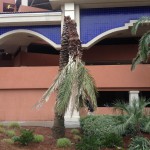
Winter is upon us again. So, if you still have palms in the landscape, be prepared, should we experience some extreme weather. Here’s a reminder of what to do.
One of the most common problems associated with freezes is that the freeze-killed lower portion of the spear leaf is degraded by secondary fungi and bacteria that are always present in our natural environment. Palm owners are often anxious to trim off the damaged leaves following a cold weather event. Avoid the temptation to remove these fronds until danger of additional freezes has passed. Even dead leaves provide insulation to the critical bud.
As the weather warms, the dead fronds need to be removed from around the bud so that the spear can begin to dry out. Drenching the bud area with a copper fungicide will reduce the secondary microbes. Repeat applications will need to continue as the palm leaves develop. Copper fungicides, unlike other fungicides, are active against bacteria and fungi. Be cautious to not use a copper nutrient spray rather than a fungicide. Delay fertilizer application until new fronds have developed. The best analysis for palms is 8-2-12 + 4Mg. Utilization of proper palm fertilization can improve cold hardiness of palms.
Palms damaged by cold can still show symptoms six months to a year following a freeze. New leaves in the spring may appear mis-shaped. Usually the palm will outgrow the damage. However, sometimes the palm loses its ability to take up water. If there is a sudden collapse of the fronds in the crown during the first hot days, the palm may die. There is nothing that can be done to save the palm.

by Sheila Dunning | Dec 16, 2015
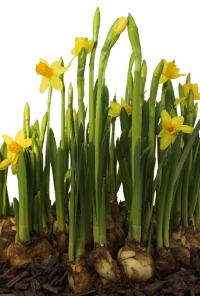
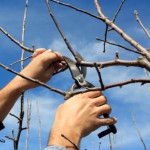 Though the calendar says December, the weather in Northwest Florida fluctuates between winter and spring temperatures. The nice days are wonderful opportunities to accomplish many of those outside landscape chores in preparation for spring. But, it is also a good time to start planning for next month’s colder temperatures. Since we don’t experience frozen soil, winter is the best time to transplant hardy trees and shrubs. Deciduous trees establish root systems more quickly while dormant; versus installing them in the spring with all their tender new leaves. Here are a few suggestions for tasks that can be performed this month:
Though the calendar says December, the weather in Northwest Florida fluctuates between winter and spring temperatures. The nice days are wonderful opportunities to accomplish many of those outside landscape chores in preparation for spring. But, it is also a good time to start planning for next month’s colder temperatures. Since we don’t experience frozen soil, winter is the best time to transplant hardy trees and shrubs. Deciduous trees establish root systems more quickly while dormant; versus installing them in the spring with all their tender new leaves. Here are a few suggestions for tasks that can be performed this month:
- Plant shade trees, fruit trees, and evergreen shrubs.
- Plant pre-chilled daffodil and narcissus bulbs (late December/early January).
- Do major re-shaping of shade trees, if needed, during the winter dormancy.
- Water live Christmas trees as needed and water holiday plants such as poinsettias as needed.
- Check houseplants for insect pests such as scale, mealy bugs, fungus gnats, whitefly and spider mites.
- Continue to mulch leaves from the lawn. Shred excess leaves and add to planting beds or compost pile.
- Replenish finished compost and mulch in planting beds, preferably before the first freeze.
- Switch sprinkler systems to ‘Manual’ mode for the balance of winter.
- Water thoroughly before a hard freeze to reduce plants’ chances of damage.
- Water lawn and all other plants once every three weeks or so, if supplemental rainfall is less than one inch in a three week period.
- Fertilize pansies and other winter annuals as needed.
- Protect tender plants from hard freezes.
- Be sure to clean, sharpen and repair all your garden and lawn tools. Now is also the best time to clean and have your power mower, edger and trimmer serviced.
- Be sure the mower blade is sharpened and balanced as well.
- Provide food and water to the area’s wintering birds.


by Sheila Dunning | Nov 18, 2015

Camellia sasanqua ‘Kanjiro’ at the South Carolina Botanical Garden
Camellia sasanquas begin blooming this month. Their three-inch diameter blossoms of pink, white, rose or red displayed over glossy, dark green foliage will come into their full glory in November. This robust and stylish aristocrat of the garden is often passed by in favor of its familiar cousin, Camellia japonica. While it’s true that the “japonicas” have larger flowers, Camellia sasanqua has just as many endearing attributes. Like the japonicas, sasanquas have been selected and hybridized into dozens of forms that vary immensely in flower color, size and shape. With a variety of growth habits from dwarf and spreading to narrow and upright, their ability to thrive in part sun or shade, sasanquas are one of the most versatile landscape plants.
Sasanquas bear profusions of flowers in fall and early winter depending on cultivar and location. In general they blossom before Camellia japonica. Sasanquas have mature heights that range from 4-15 ft. The taller cultivars are typically trimmed up as small trees. Other cultivars remain shrubby and limited in height. Their small foliage makes them suitable subjects for formal pruning, although they are quite attractive when allowed to grow naturally. Several sasanqua varieties are ideal for creating dramatic espaliers when trained on fences and walls. Like other cool weather bloomers, sasanquas bloom over a much longer period than most spring and summer plants with buds opening over a three-month period. The blossoms shatter easily and create colorful carpets of petals on the ground, adding to their garden impact. Even when not in bloom the sasanquas make a statement with their beautifully glossy, rich green leaves that excel at providing backdrops for garden neighbors.

Camellia ‘Vernalis Yuletide’ at the South Carolina Botanical Garden

Camellia sasanqua ‘Shishi Gashira’ at the South Carolina Botanical Garden
Sasanqua camellias are native to China and Japan. They prefer rich organic acid soils (the same as azaleas and gardenias). Provide plants with organic mulch such as leaf litter or shredded bark. Broken shade is preferred but sasanquas will tolerate more sun if watered well. Consistent watering is important to continuous blooming. If the experience drought conditions the buds will dry and fall without opening.
Select sasanqua varieties based on what you want them to do in your garden. ‘Shishi-Gashira’ is a dwarf, low spreading plant that is suited well for foundation plants and container specimens. Other compact varieties include the more upright ‘Yuletide’ whose fiery red blossoms are accented with bright yellow stamens and the double rose ‘Bonanza’ which begins flowering in September with flowers that rival the japonica varieties in size and form. If you need larger and faster growing plants for hedges, screens or small specimen tree, consider the white ‘Snow on the Mountain’, double pink ‘Pink Snow’ or pale, shell pink ‘Jean May’. ‘Kanjiro’ and ‘Daydream’ are vigorous upright pink varieties whose single flowers are fragrant.

 According to the Atlas of Florida Vascular Plants, there are more than 4,200 plant species naturally occurring in the state. Nearly 3,000 are considered native. The Florida Native Plant Society (FNPS) defines native plants as “those species occurring within the state boundaries prior to European contact, according to the best available scientific and historical documentation.” In other words, the plants that grew in natural habitats that existed prior to development.
According to the Atlas of Florida Vascular Plants, there are more than 4,200 plant species naturally occurring in the state. Nearly 3,000 are considered native. The Florida Native Plant Society (FNPS) defines native plants as “those species occurring within the state boundaries prior to European contact, according to the best available scientific and historical documentation.” In other words, the plants that grew in natural habitats that existed prior to development.
 radicans), Yellow Jessamine (Gelsemium sempervirens) and Trumpet Honeysuckle (Lonicera sempervirens). The seeds and berries of Black-eyed Susan (Rudbeckia fulgida), Flowering Dogwood (Cornus florida) and Dahoon holly (Ilex cassine) provide vital food for songbirds, both local and migratory. Saw palmetto (Serenoa repens) provides cover for numerous birds and small mammals, as well as, reptiles.
radicans), Yellow Jessamine (Gelsemium sempervirens) and Trumpet Honeysuckle (Lonicera sempervirens). The seeds and berries of Black-eyed Susan (Rudbeckia fulgida), Flowering Dogwood (Cornus florida) and Dahoon holly (Ilex cassine) provide vital food for songbirds, both local and migratory. Saw palmetto (Serenoa repens) provides cover for numerous birds and small mammals, as well as, reptiles. While these plant species from other parts of the world may provide some of the resources needed by native wildlife, it comes at a cost to the habitat. These exotic plants can become “invasive”, meaning they displace native plants and change the diverse population into a monoculture of one species. Chinese privet (Ligustrum sinense), Popcorn trees (Triadica sebifera) and Cogongrass (Imperata cylindrica) have
While these plant species from other parts of the world may provide some of the resources needed by native wildlife, it comes at a cost to the habitat. These exotic plants can become “invasive”, meaning they displace native plants and change the diverse population into a monoculture of one species. Chinese privet (Ligustrum sinense), Popcorn trees (Triadica sebifera) and Cogongrass (Imperata cylindrica) have  changed the landscape of Florida over the past decade. While Water hyacinth (Eichhornia crassipes) and Hydrilla (Hydrilla verticillata) have change water flow in many rivers and lakes. These invasive species cost millions of taxpayer dollars to control.
changed the landscape of Florida over the past decade. While Water hyacinth (Eichhornia crassipes) and Hydrilla (Hydrilla verticillata) have change water flow in many rivers and lakes. These invasive species cost millions of taxpayer dollars to control.













